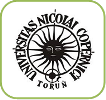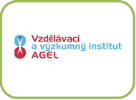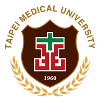Day 2 :
Keynote Forum
Sergey Suchkov
I M Sechenov First Moscow State Medical University, Russia
Keynote: Translational ideology and armamentarium as a strategic tool for advancing MS-related care: Fundamental, applied and affiliated issues
Time : 09:30-10:10
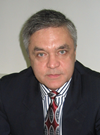
Biography:
Sergey Suchkov, a researcher-immunologist, a clinician, graduated from Astrakhan State Medical University, Russia, in 1980. He has been trained at the Institute for Medical Enzymology, The USSR Academy of Medical Sciences, National Center for Immunology (Russia), NIH, Bethesda, USA) and British Society for Immunology to cover 4 British university facilities. Since 2005, he has been working as Faculty Professor of I. M. Sechenov First Moscow State Medical University and of A. I. Evdokimov Moscow State Medical & Dental University.
Abstract:
Type-1diabetes (T1D) whilst being a chronic disease, the defining feature of which is the destruction of the insulin-secreting beta-cells and subsequent dependence on exogenous insulin, is possessing with hallmark characteristics of the complex T cell-mediated autoimmunity superimposed on genetic susceptibility. Both genetic and environmental factors combine to precipitate disease, and the outcome of the pathological process is dependent on multiple interrelated factors. The annual global incidence of T1D is increasing by 3-5% per year. The HLA genes are reported to account for approximately 40-50% of the familial aggregation of T1D.Current approaches for the prediction of T1Din screening studies take advantage of genotyping HLA-DR and HLA-DQ loci, which is then combined with family history and screening for autoAbs directed against islet-cell antigens. Inclusion of additional moderate HLA risk haplotypes may help identify the majority of children with T1D before the onset of the disease. Fine mapping and functional studies are gradually revealing the complex mechanisms whereby immune self-tolerance is lost, involving multiple aspects of adaptive immunity. The triggering of these events by dysregulation of the innate immune system has also been implicated by genetic evidence. Finally, genetic prediction of T1D risk is showing promise of use for preventive strategies. Understanding of the genetics, environmental factors, and natural history of T1D has led to greater understanding of the etiology and epidemiology of T1D. Anti islet auto-Abs can be detected before and at time of clinical diagnosis of disease. Auto-antibodies (auto Abs) to beta cell antigens (Ags) are used in the diagnosis of T1D, and studies have shown that they can be used to predict risk of developing T1D in first degree relatives of pro-bands. Strategies for disease intervention, therefore, will not only require the induction of T-cell tolerance by tipping the balance towards regulation but will also need to contain approaches that result in the scavenging of inflammatory mediators, in order to facilitate repair. FoxP3-expressing CD4(+) regulatory T cells (Tregs) are potential candidates to control autoimmunity because they play a central role in maintaining self-tolerance. There is thus a requirement for an increased, collaborative effort between stem cell biologists and immunologists in order to tailor an optimal therapeutic strategy for the treatment of this debilitating disease whilst translating the basic outcome into the daily clinical practice. There is an immediate need to restore both β-cell function and immune tolerance to control disease progression and ultimately cure T1D.
Keynote Forum
Rajendra Bhimma
University of KwaZulu-Natal,South Africa
Keynote: Novel Urinary Biomarkers in Acute Kidney Injury
Time : 10:10-10:50

Biography:
Rajendra Bhimma, MB, ChB, MD, DCH (SA), FCP (Paeds)(SA), MMed (Natal), Associate Professor of Pediatrics, Principal Specialist, Department of Pediatrics and Child Health, Nelson R Mandela School of Medicine, University of KwaZulu-Natal, South Africa. Published over 50 articles in peer-reviewed journals. Member of the following Societies: American Association for the Advancement of Science, International Pediatric Transplant Association, International Society of Nephrology, South African Medical Association, South African Paediatric Association, South African Transplant Society. Research interest in glomerular diseases, especially HIV associated kidney diseases. A long-standing member of the Biomedical Research Ethics Committee of the University of KwaZulu-Natal and an editorial board member of two international journals.
Abstract:
Purpose:rnThe aim of this study is to review the role of novel urinary biomarkers in diagnosing acute kidney injury (AKI) in children.rnMethods:rnA literature search was done using PUBMED, EBSCO host database, and GOOGLE SCHOLAR of all articles including reviews and guidelines on biomarkers of AKI in children. A total of 240 articles including review articles published over the last 10 years were searched and reviewed.rnrnResults:rnTo date over 20 biomarkers of for detection of AKI have been studied both in blood and urine but urinary biomarkers have been easier to measure and have shown significant promise as early diagnostic tests for AKI and for portending outcome. The most intensely studied urinary biomarkers for AKI in children that have shown promise for clinical used include: neutrophil gelatinase-associated lipocalin (NGAL), interleukin-18 (IL-18), kidney injury molecule-1 (KIM-1) and liver-type fatty acid-binding protein. Also, cystatin C has been shown to be a more accurate predictor of glomerular filtration rate and may also be more accurate in predicting AKI. Although cystatin C has been shown to rise approximate 1 day earlier before serum creatinine in adults, more research is required in children.rnrnConclusion:rnAs our understanding of AKI biomarkers increases, hopefully in the near future we will be able to not only diagnose AKI earlier but also use these biomarkers to determine the site of the kidney injury and the mechanism of development of AKI (e.g. ischaemic vs. nephrotoxic). rn
- Track-1 Biomarkers in Translational Medicine
Track-3 Translational Cardiology and Vascular Medicine
Track-6 Clinical Epidemiology
Session Introduction
Alina Borowska
Nicolaus Copernicus University, Poland
Title: Postoperative cognitive dysfunctions after cardiac operations
Time : 11:10-11:35

Biography:
Alina Borkowska is head of Chair and Clinical Neuropsychology Department in Collegium Medicum in Bydgoszcz, Nicolaus Copernicus University in Torun. Her research concerns on neurobiology and genetics of cognitive dysfunctions in psychiatric and neurological diseases, somatic illnesses and in patients after cardiosurgery and neurosurgery oparations. She is a head of numerous university and national grants. Prof Borkowska was awarded with national and international scientific awards. She is a member of Polish Psychiatric Association, European Psychiatrist Association and member of scientific board in numerous scientific journals. She is also advisory board member of Polish Brain Committee. She was invited as a speaker on international conferences. She has published more than 400 papers in reputed journals, total IF=112.
Abstract:
Coronary Artery Bypass Grafting (CABG) is more frequent among all surgery operations. Despite the advances in cardiac surgery, like “of pump” cardiosurgery methods, the number of patients with neurological complications is still significant. Postoperative Cognitive Dysfunction (POCD) defined as the difference between preoperative and postoperative cognitive abilities is an important neuropsychiatric complication of CABG. More severe cognitive decline on the dementia show patients with preoperative cognitive disturbances and with comorbidity of other serious somatic illnesses. CABG may cause by microembolic, hypoxia, oxidative stress which are more frequent reasons of neurons and brain tissue damage. These factors are related to the level of different cognitive domains impairment such as attention, memory, executive functions and dexterity. To prevent CNS damage and eliminate postoperative neuropsychiatric disturbances surgeons introduced some advantageous operating technics. Noteworthy among them is a state-of-the-art off-pump CABG aorta no-touch operation procedure. In other hand the pharmacological and nonpharmacological treatment methods of subjects with POCD are developed. The aim of this research was to evaluate the short-term effect of “ no touch ” OPCABG on patients ’ attention and executive functions. The results obtained show significant impairment of most cognitive domains in patients who underwent “ traditional ” OPCABG , compared to the no touch OPCABG procedure. Also the novel system dedicated for monitoring of pre – inter - and postoperative events important for CNS damage and methods of cognitive early rehabilitation will be presented.
Ahmed Daak
Sancilio & Company , USA
Title: Novel therapeutic approach of using high DHA omega-3 fatty acids to prevent vaso occlusive crisis in patients with sickle cell disease
Time : 11:35-12:00

Biography:
Ahmed Daak has completed his medical degree (MB BS), from University of Khartoum, Sudan and got his PhD from London Metropolitan University and postdoctoral studies from Harvard University School of Public Health. Dr Daak is assistant professor of medical biochemistry, Faculty of Medicine, University of Khartoum. Currently, He is the director of Clinical Research, Sancilio& Company Inc. The company is specialized on development of novel therapies based on lipidomic research. Dr Daak has published several papers in reputed journals and book chapter about the role of omega-3 fatty acids in sickle cell disease
Abstract:
Chronic inflammation, increased adherence of blood cells to vascular endothelium, oxidative stress, hemolysis and hypercoagulopathy are known important factors that contribute to pathophysiology of Sickle Cell Disease (SCD). There is evidence that omega-3 fatty acids are effective and safe therapy for patients with the disease. However, the mechanisms through which the effect is mediated have not yet been fully elucidated. To demonstrate the effect of omega 3 fatty acid (DHA and EPA) supplementation on inflammatory state, blood cells adhesion, markers of oxidative stress, coagulation and intravascular haemolysis. These biochemical and molecular effects of omega-3 fatty acids on SCD were assessed in a subgroup of homozygous sickle cell patients participated in the Sudan double blinded, placebo controlled, randomized clinical trial. High DHA Omega-3 fatty acid supplementation resulted in a significant (p<0.05) reduction in total white blood cells, Lactate Dehydrogenase (LDH), glutathione peroxidase, super oxide dismutase, nuclear factor-kappa B (NF-κB) gene expression in buffy coat, expression of monocyte integrin and D-dimer. Omega-3 fatty acid group had segnificantly higher plasma vitamin E levels after one year of supplemenation. No segnificant difference between the omega-3 treated and omega-3 untrated groups in hs-CRP and plasma tumour necrosis factor-α (p>0.05). These study suggests that the therapeutic effect of omega-3 fatty acid in SCD involves amelioration of chronic inflammatory state, oxidative stress, coagulation and intravascular hemolysis. These findings are in line with the clinical trials that reported improvements in SCD severity and complications after supplementation with omega-3 fatty acids.
Rajendra Bhimma
University of Kwa-Zulu-Natal, South Africa
Title: Urinary tract infections in children: A changing paradigm
Time : 12:00-12:25

Biography:
Rajendra Bhimma, MB, ChB, MD, DCH (SA), FCP (Paeds)(SA), MMed (Natal), Associate Professor of Pediatrics, Principal Specialist, Department of Pediatrics and Child Health, Nelson R Mandela School of Medicine, University of KwaZulu-Natal, South Africa. Published over 50 articles in peer-reviewed journals. Member of the following Societies: American Association for the Advancement of Science, International Pediatric Transplant Association, International Society of Nephrology, South African Medical Association, South African Paediatric Association, South African Transplant Society. Research interest in glomerular diseases, especially HIV associated kidney diseases. A long-standing member of the Biomedical Research Ethics Committee of the University of KwaZulu-Natal and an editorial board member of two international journals.
Abstract:
Purpose: To review the changing paradigms in the diagnosis, investigation and management of Urinary Tract Infections (UTIs) in children beyond the neonatal period. Methods: A literature search was done using PUBMED, EBSCO host database and GOOGLE SCHOLAR of all articles including reviews and guidelines on UTIs in children for the last ten years. A total of 2725 articles including review articles and guidelines published over the last 10 years were searched and reviewed. Results: UTIs are the second most common cause of serious bacterial infections in early childhood. Despite increasing resistance to several first-line antibiotics, appropriate antibiotic treatment has almost eliminated mortality. Early guidelines advocated aggressive treatment and extensive imaging studies, particularly for the detection of serious ureteric reflex and kidney scarring. Treatment in the acute episode is aimed at eradication of bacteriuria and alleviation of symptoms. Long-term goals include prevention of recurrent attacks of UTIs, kidney scarring and correction of urological lesions that may predispose to recurrent infections. Although there is increasing evidence to show that long-term antimicrobial prophylaxis may be associated with a reduced risk of recurrent infection in selected groups of patients, but not renal scarring, more studies are needed to confirm this. Surgical intervention is now restricted to cases with severe vesicoureteric reflux and failed medical management with endoscopic surgery being increasingly used in most centres compared to open surgery. Conclusion: A more tangible approach to UTIs is advocated providing for more judicious use of resources with reduced harm from procedures, without affecting outcome.
Kaoutar Ennour-Idrissi
Laval University, Canada
Title: Telomere length and lifestyle factors in breast cancer patients
Time : 12:25-12:50

Biography:
Kaoutar Ennour-Idrissi pursuing her MSc studies in Clinical Epidemiology at Laval University. She is a Physician (medical degree obtained from Caddi Ayyad University) specialized in Anatomical Pathology. She has received many awards.
Abstract:
Telomeres are highly specialized structures capping the ends of chromosomes that ensure genome integrity during replication. As telomere length is an indicator of cell aging, telomere shortening has been linked to aging-related diseases, especially cancer. Several studies suggest that lifestyle factors have an impact on telomere length. Smoking, alcohol abuse, sedentary lifestyle and obesity had been associated with telomere shortening in peripheral white blood cells. These same factors are also associated with breast cancer risk and prognosis. However, little is known about the effect of these modifiable factors on telomere maintenance in women with breast cancer. In this study, using a highly reproducible PCR method, we measured telomere length in peripheral white blood cells obtained before surgery from 162 breast cancer patients recruited consecutively and for which complete data on lifestyle factors were collected. In our population, physical activity was positively correlated with longer telomeres, especially physical activity related to occupation and transportation. No correlation was observed for recreational activities, alcohol consumption, smoking and anthropometric measures. Since white blood cells are involved in anticancer immune responses, these findings suggest that even low intensity regular physical activity could be effectively recommended to breast cancer patients, and may contribute to the control of cancer after conventional therapies.
David Stejskal
Agel Research and Training Institute, Czech Republic
Title: New marker of metabolic syndrome
Time : 13:50-14:15

Biography:
David Stejskal has completed his Ph.D at the age of 33 years from Palacký University and postdoctoral studies from Charles University, School of Medicine, Czech republic. He is the Head of Department of Laboratory Medicine Central Moravian Hospital Trust, Czech Republic. This is the branch of Agel Training and Research Institute, Czech Republic.He has published more than 160 papers in reputed journals and serving as an editorial board member of repute journals.
Abstract:
Recently an intensive search for new indicators of metabolic syndrome and its complications. Potential, yet unmeasured indicators are CD5like and CD36 in serum. Objective: To build ELISA test and determination CD5like and CD36 in patients with metabolic syndrome. Methods: 123 subjects were examined; 65 of them suffered from metabolic syndrome (minimum of three indicators characterize metabolic syndrome). 30 healthy controls. All measured normal risk factors. CD5like and CD36 was measured in R&D laboratories Biovendor Czech Republic. Results: CD5-like linked with the number of components of metabolic syndrome (P <0.01). This parameter independently discriminated against persons with metabolic syndrome from lean individuals. CD36 with BMI values nor the number of components of the metabolic syndrome unchanged. Conclusion: The first time was measured CD-5 like in serum. It seems that this is a new parameter independent of the metabolic syndrome.
Alex Soltermann
University Hospital Zurich, Switzerland
Title: Lung neuroendocrine tumors: Correlation of ubiquitinylation and sumoylation with nucleo-cytosolic partitioning of PTEN
Time : 14:15-14:40

Biography:
He is an assistant professor of the University of Zurich and consultant surgical pathologist at the Institute or Surgical Pathology, University Hospital Zurich, Switzerland, where he isresponsible for lung and head neck pathology. He is also the head of our In-situ IHC/FISH laboratory. His research is focused on the tumor-stroma interactions of lung squamous cell carcinoma and corresponding localized molecular analysis of tumor tissue using laser capture microdissection and microfluidic probes. Currently, we are working on a 3D tumor model using a combination of serial histologic sections and parallel X-ray microtomography. He has 72 original publications.
Abstract:
Background: The tumor suppressor Phosphatase and Tensin Homolog (PTEN) is a pleiotropic enzyme, inhibiting phosphatidyl-inositol-3 kinase (PI3K) signaling in the cytosol and stabilizing the genome in the nucleus. Nucleo-cytosolic partitioning is dependent on the post-translational modifications ubiquitinylation and sumoylation. This cellular compartmentalization of PTEN was investigated in lung Neuroendocrine Tumors (lung NET). Methods Tumor tissues from 192 lung NET patients (surgical specimens = 183, autopsies = 9) were investigated on tissue microarrays. PTEN was H-scored by two investigators in nucleus and cytosol using the monoclonal antibody 6H2.1. Results were correlated with immunoreactivity for USP7 (herpes virus-associated ubiquitin-specific protease 7) and SUMO2/3 (small ubiquitin-related modifier protein 2/3) as well as PTEN and p53 FISH gene status. Clinico-pathologic data including overall survival, proliferation rate and diagnostic markers (synaptophysin, chromogranin A, Mib-1, TTF-1) were recorded. Results The multicentre cohort included 58 typical carcinoids (TC), 42 Atypical Carcinoids (AC), 32 Large Cell Neuroendocrine Carcinomas (LCNEC) and 60 Small Cell Lung Carcinomas (SCLC). Carcinoids were smaller in size and had higher synaptophysin and chromogranin A, but lower TTF-1 expressions. Patients with carcinoids were predominantly female and 10 years younger than patients with LCNEC/SCLC. In comparison to the carcinoids, LCNEC/SCLC tumors presented a stronger loss of nuclear and cytosolic PTEN associated with a loss of PTEN and p53. Concomitantly, a loss of nuclear USP7 but increase of nuclear and cytosolic SUMO2/3 was found. Loss of nuclear and cytosolic PTEN, loss of nuclear USP7 and increase of cytosolic SUMO2/3 thus correlated with poor survival. Among carcinoids, loss of cytosolic PTEN was predominantly found in TTF1-negative larger tumors of male patients. Among SCLC, loss of both cytosolic and nuclear PTEN but not proliferation rate or tumor size delineated a subgroup with poorer survival (all p-values <0.05). Conclusions Cellular ubiquitinylation and sumoylation likely influence the functional PTEN loss in high grade lung NET. Both nuclear and cytosolic PTEN immunoreactivity should be considered for correlation with clinico-pathologic parameters.
Jose R. Navarro
Panamerican University School of Medicine, USA
Title: Initial approach on the characterization of Cardiomesenchymal Stem Cells
Time : 14:40-15:05

Biography:
Jose R. Navarro is a sixth-year medical student at Panamerican University in Mexico City, Mexico. He has participated in research protocols since his second year at medical school and recently completed an internship at Mexico's General Hospital with honors. His main interest is stem cell therapy for cardiac diseases.
Abstract:
A cardinal issue concerning the clinical translation of cardiac cellular therapy is to define the most suitable cell type. In terms of differentiation capacity, cardiac stem cells (CSC) are currently the best cells for cardiac regeneration therapy; nonetheless they are an unfeasible alternative in a clinical setting due to the highly invasive procedures necessary for their extraction. Mesenchymal stem cells (MSC) emerge as a promising option for cardiac regeneration therapy because they are readily abundant in a wide variety of tissues, particularly bone marrow and adipose tissue. We propose the term cardiomesenchymal stem cells (CMSC) to designate a MSC subpopulation with a specific differentiation commitment toward cardiac tissues and a limited differentiation capacity toward traditional mesenchymal tissues. Even though there is presently no consensus regarding the relation between a particular immunophenotype and a specific cardiac differentiation commitment, we suggest that the expression of traditional CSC markers, such as CD34 and CD117, in MSC may determine cardiac differentiation engagement. Therefore, we analyzed the expression of cardiac-specific genes and proteins in CD34+/CD117+ MSC derived from bone marrow supernatant. This cellular population residing in a mesenchymal niche, exhibiting essential CSC epitopes and traditional MSC surface markers, expresses distinctive cardiac genes and produces discriminative cardiac proteins. The isolation of cardiac progenitors resident in non-cardiac niches, based on a particular immunophenotype and the expression of cardiac structural proteins, could yield a superior therapeutic efficiency and enhance the clinical feasibility of cardiac cellular therapy.
ZL Mkhize Kwitshana
Mangosuthu University of Technology, South Africa
Title: Hr –HPV: Distribution of High Risk Human Papillomavirus strains in young women of KwaZulu-Natal, South Africa: Implications for vaccination
Time : 15:05-15:30

Biography:
Dr ZL Mkhize-Kwitshana holds a PhD in Immunology. She is the Head of the Biomedical Sciences Department- Faculty of Natural Sciences at Mangosuthu University of Technology. Her research focus is mainly on immunology of co-infections. She has published 10 peer –reviewed articles in national and international journals and 18 Conference Proceedings; she serves as a reviewer for several reputable journals and is an Editorial Board member for the international journal IJMA. She is a founder of the SA National Parasite Control Task Team and is also an executive Committee member of the South African Medical Research Council Board.
Abstract:
High Risk Papillomavirus (hr-HPV) genotypes are causal agents for cervical cancer and some geographical variation has been reported. Available vaccines cater for up to nine hr-HPV genotypes, which may not necessarily be the most predominant strains in every region of the world. Data on HPV genotype in South African regions is limited and unavailable for KwaZulu- Natal (KZN) province .Our study aimed to describe hr-HPV genotype distribution among young women in relation to cervical cancer vaccination. A total of 1223 sexually active young women were recruited from high schools, 658 (54%) were from Ugu and 565 (46%) from Ilembe districts and these were investigated for high risk Human Papillomavirus, using GP5/6+ primers and enzyme immunoassay. Of the 1223 vaginal lavages, 301 (25%) were positive for hr-HPV. Of these, 177 (27%) and 124 (22%) were from Ugu and Ilembe districts respectively (p = 0.046). HPV type distribution per district revealed an overall similar distribution, the most predominant types in descending order were HPV 16, 51, 18, 35, 33, 56, 45, 52 and 59. Our data describes high-risk HPV strains infecting young women in the KwaZulu-Natal province and demonstrated that the new nanovalent HPV vaccine does not protect against all predominant hr-HPV types. HPV 51, 35 and 56 are most prevalent in KZN yet not covered by the nanovalent vaccine. Investigation of cervical cancer cases would be necessary to ascertain that these types are involved in a significant proportion of these cases.
Martin Wehling
University of Heidelberg, Germany
Title: Translational research and development of drugs: Translatability assessment
Time : 15:30-15:55

Biography:
Martin Wehling, MD, is full professor of clinical pharmacology at the University of Heidelberg. He is also board certified internist (cardiologist) and has longstanding experiences in basic science (cell physiology, steroid pharmacology, nongenomic steroid actions), clinical trials (translating basic science into human studies) and clinical medicine (invasive cardiology, endocrinology). In 2004, he was appointed by AstraZeneca as director of discovery (=translational) medicine. In 2007, he returned to his academic position to further translational medicine by aligning academic and private activities to support biomedical innovation. His main tools are connecting distant players in the translational process, developing technological platforms and integrating them into the translational process, assembling, developing and profiling of biomarkers with particular assessment of their predictive value and developing smart translational plans to promote translatable projects.
Abstract:
Translational medicine was invented about a decade ago both as a catchword and as a novel approach to improve success in drug development and ameliorate the low-output syndrome from collapsing pipelines. Yet, no robust structures such as toolboxes, algorithms, reproducible standards and procedures, and assessment tools were developed and/or implemented. Translational medicine is one of the clues to survival of biomedical research, but it definitely has to be filled with scientific and operational substance. By optimizing translational processes from preclinical to clinical stages, this new scientific discipline aims at increasing the yield of biomedical research ultimately leading to improved patient care. One important dimension of this novel science of translational medicine is certainly the assessment of the translational potential of an innovative project. The assessment of translatability as a whole appears as a new challenge to biomedical research as innovation is costing a very high prize due to late attrition of projects, mainly at the clinical stage. The score gives an estimate of the translatability of an early drug project, and may be adapted to early clinical development as well. In this score several factors including evidence from animal models, humans, biomarker validation, pharmacogenomics and other areas are assessed to estimate the translatability of an early drug project.
Zodwa Dlamini
Mangosuthu University of Technology ,South Africa
Title: Expression Analysis of the Peripheral Benzodiazepine Receptor in Cancers

Biography:
Professor Zodwa Dlamini is the Deputy Vice Chancellor: Research, Innovation & Engagements at Mangosuthu University of Technology. She obtained her BSc and BSs.Hons in Biochemistry from the University of the Western Cape (UWC), MSc–Plant Biotechnology from the University of Natal and PhD-Human Molecular Genetics from the University of Natal Medical School, Postdoctoral fellow-Human Molecular Genetics, UWC. She then worked as a lecturer at the University of the Witwatersrand and then briefly at the University of Limpopo. She then joined Unisa as a Deputy Executive Dean (Research) and a professor. Professor Dlamini is also the Vice Chairperson of the South African Medical Research Council Board, the largest medical research organisation in Africa and holds an appointment as an honorary research fellow for the University of Bristol, School of Medical Sciences.
Abstract:
The Peripheral Benzodiazepine Receptor (PBR) is a distinct receptor from the central benzodiazepine receptor. PBR is involved in numerous biological conditions including the regulation of cellular proliferation and apoptosis, steroidogenesis, heme biosynthesis, anion and porphyrin transport and mitochondrial functions such as oxidative phosphorylation and translocation of cholesterol from the outer to the inner mitochondrial membrane. Recent studies have shown that the expression of PBR correlated with tumour malignancy and patient survival. The current study aims to determine the expression pattern and level of PBR mRNA in various types of healthy human tissue and their cancerous counterparts. Tissue arrays of multiple organs containing normal and diseased tumour tissues were probed with sense and anti-sense PBR probes. Increased levels of PBR mRNA were observed in most cancer types with some notable exceptions. PBR mRNA expression levels decreased as tumours became more invasive while in prostate adenocarcinoma of the peripheral duct and acini PBR mRNA expression increased as tumour invasion increased. Increased levels of PBR in various types of cancer tissues suggest an involvement of this gene and its products in human tunorigenesis.
Gerard A. Rongen
Radboud university medical center, The Netherlands
Title: Cardiovascular pharmacotherapy: Innovation stuck in translation

Biography:
Rongen has completed his PhD at the age of 30 years from Radboudumc, the Netherlands and had a postdoctoral research fellowship at Mount Sinai Hospital, University of Toronto, Canada. He completed his medical training at the age of 35 as Internist (Vascular Medicine) and Clinical Pharmacologist. In 2011 he accepted a position as full Professor in ‘Translational Cardiovascular Research’. He received the Galenus research prize and an Established Clinical Investigator grant from the Dutch Heart Foundation. He has published over 120 papers in peer reviewed journals. His research interests are pharmacology of purines, ischemia-reperfusion injury and vascular biology as studied in humans in-vivo
Abstract:
Systematic reviews of animal studies have revealed serious limitations in internal and external validity strongly affecting the reliability of this research. In addition inter-species differences are likely to further limit the predictive value of animal research for the efficacy and tolerability of new drugs in humans. Important changes in the research process are needed to allow efficient translation of preclinical discoveries to the clinic, including improvements in the laboratory and publication practices involving animal research and early incorporation of human proof-of-concept studies to optimize the interpretation of animal data for its predictive value for humans and the design of clinical trials. Illustrated by recent clinical trials in the area of (cardiac) ischemia-reperfusion injury performed by this author and his colleagues, the impact of translational problems between animals and humans will be discussed on clinical development of therapeutics.
Rafael Malagoli Rocha
A C Camargo Cancer Center - Molecular Morphology Group, Brazil
Title: EGFR expression in vulvar cancer: Clinical implications and tumor heterogeneity
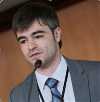
Biography:
Rafael Malagoli Rocha has completed his PhD at the age of 27 years from The University College London. He is the Head of the Molecular Morphology Group at A C Camargo Cancer Center in São Paulo. His group has published about 100 international papers on gynecologic cancer, molecular pathology, and technical improvement. Also, he has been serving as an editorial board member of repute.
Abstract:
Epidermal Growth Factor Receptor (EGFR) protein expression was assessed by ImmunoHistoChemistry (IHC) in 150 cases of invasive vulvar squamous cell carcinoma. In addition, gene copy number status by fluorescence in situ hybridization was performed in a smaller set of samples. Results were correlated with patient's clinical data and prognostic factors. EGFR overexpression (2+ and 3+) was observed on the membrane in 24.66% and 21.33% of all cases, respectively. Higher EGFR expression was associated with depth of invasion (P = .0409) and disease recurrence (P = .0401). Cytoplasm staining was found in 21.33% of the cases and was associated with absence of nodal metastasis (P = .0061) and better survival (P = .0199). Intratumor heterogeneity of EGFR IHC staining was frequently observed (55.33%) and was associated with the presence of nodal metastasis (P = .0207) and tumor invasion (P = .0161). Worse survival outcomes have been demonstrated in tumors with EGFR heterogeneity (P = .0434). EGFR gene status evaluated by fluorescence in situ hybridization did not correlate with protein expression evaluated by IHC. In conclusion, EGFR cytoplasm staining has no link with poorer outcome; still, this pattern of staining is even more related to better prognosis. EGFR heterogeneity of staining correlated with more aggressive tumors, and presented to be an important marker of poor prognosis in vulvar squamous cell carcinoma. The usage of small biopsies or even tissue microarrays for vulvar cancer evaluation should be carefully reconsidered for the assessment of EGFR as the results may be misleading. Protein overexpression may be independent on gene amplification, showing that other molecular mechanisms than copy number variation may regulate protein expression of EGFR in vulvar cancer.
Lisa Salvatore
Azienda Ospedaliero-Universitaria Pisana, Italy
Title: Clinical and translational research in metastatic colorectal cancer

Biography:
Lisa Salvatore has completed her Fellowship Training Program in Oncology at the age of 29 years (110/110 cum laude) at the University of Pisa. She is attending the first year of PhD Fellowship in “Clinical physipathology†at the University of Pisa and is currently working as a medical oncologist at the University Oncology Department. She has obtained the second level master’s degree in “Clinical Trials on Pharmaceuticals†at the Division of Pharmacology. She has attended the ESMO CUV Fellowship at the Vall d’Hebron Institute of Oncology, Barcelona, in July-August 2014. She has published more than 30 papers in reputed journals.
Abstract:
Several steps forwards have been made in the treatment of metastatic Colorectal Cancer (mCRC) in the last years. The introduction of new active drugs, such as regorafenib in heavily Pretreated Patients (pts), the use of more intensive combination treatment, such as first-line FOLFOXIRI plus bevacizumab, and even the refinement of patient selection (both clinical and molecular), have notably improved the outcome of mCRC pts. Our group, in Pisa, headed by Prof Alfredo Falcone, has given and is continuing to give his contribution in this field. Our main success has been the phase III TRIBE, a multicenter, no-profit, randomized study, that demonstrated the superiority of FOLFOXIRI in combination with bevacizumab versus FOLFIRI plus bevacizumab in the first-line treatment of mCRC pts, improving both response rate, progression-free survival and overall survival. The TRIBE results have been recently published on the prestigious journal “The New England Journal of Medicine†and updated results have been presented at the last ASCO GI and they will be presented at the ASCO Congress. We have continued to investigate the role of the triplet in this setting of pts, conducting two multicenter, phase II randomized studies, whose enrollement has been recently concluded (the MOMA and the MACBETH studies) and the ongoing phase III TRIBE2 study, a strategy study evaluating first-line FOLFOXIRI plus bevacizumab and its rechallenge versus the standard sequence with FOLFOX/FOLFIRI plus bevacizumab. Further clinical and translational studies conducted by our group will be presented during the congress.
Rong Zhang
University of Pennsylvania, USA
Title: CD226 ligation protects against EAE by promoting IL-10 expression via regulation of CD4+ T cells differentiation

Biography:
Rong Zhang is now in his third year of doctoral candidate of the Fourth Military Medical University and currently doing research as a joint PhD in Department of Anatomy and Cell Biology, University of Pennsylvania, School of Dental Medicine. He has done some work concerning the genotype and treatment of genetic diseases and is now doing research mainly on immunoregulatory properties of mesenchymal stem cells on immune cells. He has published 2 papers in reputed journals.
Abstract:
IL-10 is an important anti-inflammatory cytokine that has been implicated in a variety of autoimmune conditions, including Multiple Sclerosis (MS). It has been shown that anti-CD226 treatment ameliorates Experimental Autoimmune Encephalomyelitis (EAE), the widely accepted model of MS. However, the mechanism still needs to be elucidated. Here we show that CD226 ligation by anti-CD226 mAb LeoA1 efficiently promoted IL-10 production in human Peripheral Blood Monocytes (PBMC) or in Mixed Lymphocyte Culture (MLC) system. Meanwhile, LeoA1 treatment significantly induced the CD4+IL-10+ T cell differentiation while suppressing the generation of Th1 and Th17 through modulating IL-10R1 dependent STAT signaling pathway. Furthermore, CD226 pAb administration in vivo effectively reduced the onset of EAE in mice by promoting IL-10 production and regulating T cell differentiation. More importantly, the onset and severity of EAE in CD226 knockout mice was reduced and the serum IL-10 expression levels in CD226 knockout mice with EAE were higher than that in control mice. These findings establish that CD226 plays an important role in mediating autoimmune diseases and IL-10 is an important factor that mediates the inhibitory effects of CD226 ligation on EAE. Our findings thus provide hitherto unrecognized mechanism of CD226 targeted therapy of EAE. In conclusion, our data suggest manipulating IL-10 and its relative signaling pathway could be a feasible therapeutic strategy to improve the efficacy of CD226 associated treatment of human autoimmune diseases and disorders.
Rodrigo Dias Nunes
Universidade do Sul de Santa Catarina, Brazil
Title: Association between maternal and fetal factors and quality of cord blood as a source of stem cells
Biography:
Rodrigo Dias Nunes, Teacher coordinator of the boarding of Obstetrics and Gynecology, Universidade do Sul de Santa Catarina, Chief of Obstetrics and Gynecology service, Hospital Regional de São José, Florianopolis, Brazil
Abstract:
Objectives: To comparatively analyze maternal and fetal factors and quality markers of bloodsamples in a public umbilical cord blood bank.Method: This is a cross-sectional descriptive study that revisited 458 records of donationsfrom September 2009 to March 2013 at the Hemocentro de Santa Catarina. The means ofmarkers were used to define cutoff points for the quality of cord blood.Results: Most donations came from women with ages between 18 and 29 years (62.8%),gestational age ≥ 40 weeks (55.2%), vaginal delivery (51.3%), primiparous (41.4%), and withmale newborns (54.4%) weighing between 3000 and 3499 g (41.8%). The volume of the dona-tions ranged from 71.6 to 275.2 mL, the total nucleated cell count ranged from 4.77 × 108to31.0 × 108cells and CD34+cells ranged from 0.05 to 1.23%. There were statistically significantdifferences in the volume with respect to gestation age > 38 weeks (p-value = 0.001), cesareansection (p-value < 0.001) and birth weight > 3500 g (p-value < 0.001). The total nucleated cellcount was positively affected by cesarean section (p-value = 0.022) and birth weight > 3500 g(p-value < 0.001). There was no statistically significant difference between the variables andthe percentage of CD34+cells.Conclusions: Delivery route and birth weight influence the volume of cord blood and the totalnucleated cell count. Gestational age influences only the volume of cord blood.
Alexander Melerzanov
Moscow Physico-Technical University, Russia
Title: Translational medicine for interventional cardiology and angiology. Organizational issues

Biography:
Abstract:
Usual perception of the translational medicine is based on OMICs technologies approach to the personalized medicine. In our center we make an attempt to expand the understanding of translational medicine towards mathematical modelling of circulatory system as another base for personalized treatment. Modern visualization means combined with effective algorithms of automated processing of diagnostics data allow construction of individual computational grids for surgery planning and treatment optimization. Development and implementation into clinical practice of devices with s.c. â€hardware-software systems†minimizes diagnostic invasion by using of math modelling of the blood stream and cardiac workload. This way we plan to achieve as better treatment outcome including surgery itself and follow up protocols and as a next step we see development of the individualized implanted devices based on stretchable electronics. For that work we have established a translational medicine department. Department consists of physicians and scientists joint by two leading Russian technical and medical universities (Moscow Institute of Physics and Technology (State Research University) and First Moscow State Medical University named after I.M.Sechenov respectively) and George Washington University. The plan of Ministry of Healthcare of Russian Federation is to establish a chain of translational medicine centers. We are the first one due to the fact the cardio-circulatory diseases are by far (58%) overcome all other reasons for mortality in Russia. Implementation of translational medicine into practical healthcare became possible after the new law acceptance. New law allows medical professionals to apply novel scientific approaches to practice based on the decision of the ethic committee with funding from the Ministry of Healthcare. New approach will change the existing approach to interventional angiology, will have a pronounced as medical care quality improvement so an economical effect.
Win-Ping Deng
Taipei Medical University, Taiwan
Title: Delayed animal aging through the recovery of stem cell senescence by platelet rich plasma

Biography:
Professor Deng obtained his doctorate in cancer biology at the Harvard University in 1993. In 2000, Dr. Deng joined the faculty of the Collage of Oral Medicine at the Taipei Medical University where now he is Deputy Dean and Professor at TMU. Dr. Deng pioneered a new research for combining stem cell and molecular imaging to study the cancer therapy (Lung cnacer, colon cancer and breast cancer) or tissue regeneration for skeleton diseases, such as Osteoarthritis (OA) and Osteoporosis.
Abstract:
Aging is related to loss of functional stem cell accompanying loss of tissue and organ regeneration potentials. Previously, we demonstrated that the life span of Ovariectomy-SenescenceAccelerated Mice (OVX-SAMP8) was significantly prolonged and similar to that of the congenic senescence-resistant strain of mice after Platelet Rich Plasma (PRP)/embryonic fibroblast transplantation. The aim of this study is to investigate the potential of PRP for recovering cellular potential from senescence and then delaying animal aging. We first examined whether stem cells would be senescent in aged mice compared to young mice. Primary Adipose derived Stem Cells (ADSCs) and Bone marrow derived Stem Cells (BMSCs) were harvested from young and aged mice, and found that cell senescence was strongly correlated to animal aging. Subsequently, we demonstrated that PRP could recover cell potential from senescence, such as promote cell growth (cell proliferation and colony formation), increase osteogenesis, decrease adipogenesis, restore cell senescence related markers and resist the oxidative stress in stem cells from aged mice. The results also showed that PRP treatment in aged mice could delay mice aging as indicated by survival, body weight and aging phenotypes (behavior and gross morphology) in term of recovering the cellular potential of their stem cells compared to the results on aged control mice. In conclusion these findings showed that PRP has potential to delay aging through the recovery of stem cell senescence and could be used as an alternative medicine for tissue regeneration and future rejuvenation.
He Huang
Nanjing Medical University, China
Title: A study to identify and characterize the stem/progenitor cell in Rabbit meniscus
Biography:
He Huang is a professor and PhD student supervisor at Lanzhou University School of medicine.
Abstract:
Background The repair of meniscus in the avascular zone remains a great challenge, largely owing to their limited healing capacity. Stem cells based tissue engineering provides a promising treatment option for damaged meniscus because of their multiple differentiation potential. We hypothesized that Meniscus-derived Stem Cells (MMSCs) may be present in meniscal tissue, and if their pluripotency and character can be established, they may play a role in meniscal healing. Results To test our hypothesis, we isolated MMSCs, Bone Marrow- derived Stem Cells (BMSCs) and fibrochondrocytes from rabbits. The characters of these three types of cells were identified by evaluating morphology, colony formation, proliferation, immunocytochemistry and multi-differentiation. Moreover, a wound in the center of rabbit meniscus was created and used to analyze the effect of BMSCs and MMSCs on wounded meniscus healing. BMSCs & MMSCs expressed the stem cell markers SSEA-4, Nanog, nucleostemin and STRO-â… , while fibrochondrocytes expressed none of these markers. Morphologically, MMSCs displayed smaller cell bodies and larger nuclei than ordinary fibrochondrocytes. Moreover, it was certified that MMSCs and BMSCs were all able to differentiate into adipocytes, osteocytes, and chondrocytes in vitro. However, more cartilage formation was found in wounded meniscus filled with MMSCs than that filled with BMSCs. Conclusions We showed that rabbit menisci harbor the unique cell population MMSCs that has universal stem cell characteristics and posses a tendency to differentiate into chondrocytes. Future research should investigate the mechanobiology of MMSCs and explore the possibility of using MMSCs to more effectively repair or regenerate injured meniscus
Nedime Serakıncı
Near East University Medical Faculty, North Cyprus
Title: The double faced role of mesencyhmal stem cells in tumor development and potential use in cancer therapy
Biography:
Dr. Nedime Serakıncı, Head of Centre of Excellence of Near East University,North Cyprus. He holds articled in many international journals
Abstract:
Evidences from cancer stem cell biology and the development of new models to validate the self renewal of stem cells are suggesting that stem cells are susceptive to carcinogenesis and consequently can be the origin of many cancers. We have established a telomerase-transduced human Mesenchymal Stem Cell line (hMSC-telo 1) and subsequently exposed these cells to irradiation in order to achieve malignant transformation. Following irradiation we analyzed the long-term effects with special focus on whether irradiation can trigger tumor development in human mesencyhmal stem cells. Our observations indicate that irradiation destabilized the telomeres and that the presence of uncapped telomeres initiated fusion-break-fusion cycles resulting in increased chromosomal instability and tumor formation in MSC’s. Thus, bone marrow derived human mesenchymal stem cells are capable of exhibiting a malignant phenotype. Additionally, hMSC-telo 1 used to investigate whether these cells can preferentially engraft at the tumor site and can be used as vehicles for local delivery of biological agents to the tumor. Our results demonstrated both homing potential of the hMSC by the tumor site occurrence of cellular targeting and also reduction of the tumor size after the pharmacological induction. Mutation of telomere sheltering protein TRF2 or silencing shown to be lethal for the cells thus we made approx. 40% knock-out with siRNA TRF2 in hMSC then the cells subjected to IR. Our results demonstrated controlled suppression (knock-out) of TRF2 1.5-2 fold increase radyosensitivity of hMSC. These results are valuable for improving the effectiveness of radiotherapy in the treatment of cancer.
Manoj Kumar
All India Institute of Medical Sciences, India
Title: Modulation of erythropoietin receptor on bone marrow in trauma hemorrhagic shock patients
Biography:
Manoj Kumar of All India Institute of Medical Sciences, New Delhi with expertise in Immunology, Clinical Immunology, Infectious Diseases. He has more than 62 publications
Abstract:
Background: Alternation of hematopoietic has been observed in severe trauma and hemorrhagic shock. Hemorrhagic Shock (HS) induced expression of Hypoxia Inducible Factor (HIF)-α, β results elevated Erythropoietin (EPO) level. Endogenously elevated EPO unable to reactivate the hematopoietic failure. The purpose of the study was to evaluate the serum EPO levels and expression of the erythropoietin receptor (EPO-R) on Bone Marrow (BM) that can prediction of delay recovery of hematopoietic dysfunction. Objective: This study to evaluate the serum levels EPO and expression of bone marrow EPO-R in patients with trauma hemorrhagic shock. Methods: We conducted a prospective study with 100 individuals of whom 30 (%) were healthy controls and 70 (%) were T/HS. Day 1, we have collected peripheral blood sample for measurement of EPO levels by sandwich ELISA and those patients who have survived day 3, collected bone marrow sample for analysis of EPO-R expression on BM by flow cytometry. Clinical and laboratory data were prospectively collected. Results: Significantly decreased the expression of EPO-R (<0.05) on bone marrow in the T/HS patients when compared with control group. Serum levels of EPO did not significant in T/HS patients. Conclusions: Our studies suggest, expression of EPO-R on BM can be used predictor of delay recovery of hematopoietic dysfunction. Further investigate in this area must determine the expression of EPO-R mRNA on BM by RT-PCR and more studies to be needed exogenously effect of EPO on hematopoietic dysfunction in patients with T/HS.

